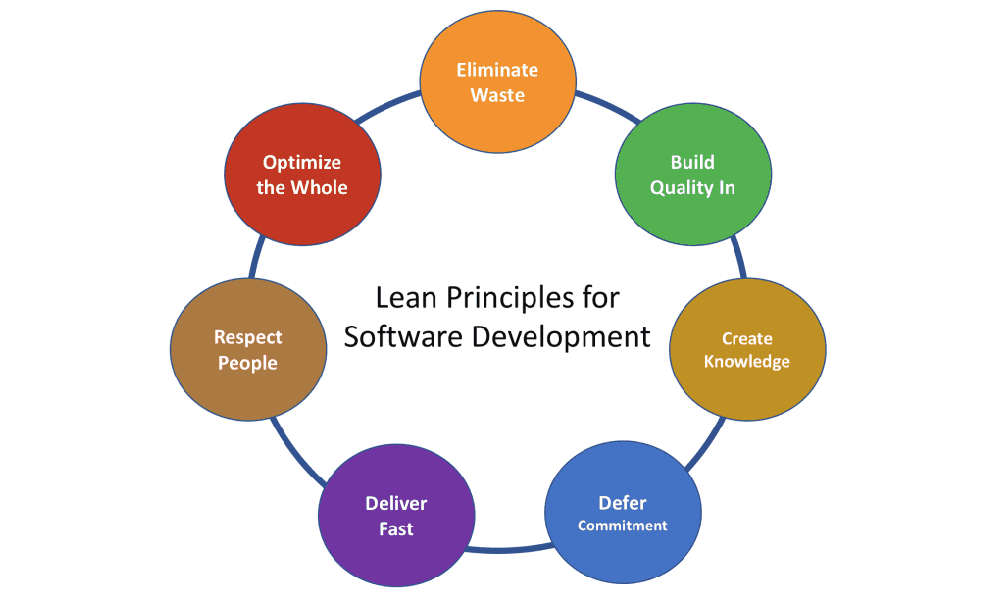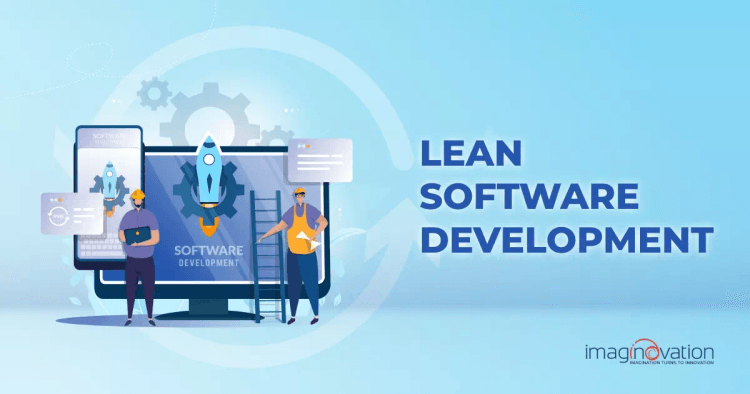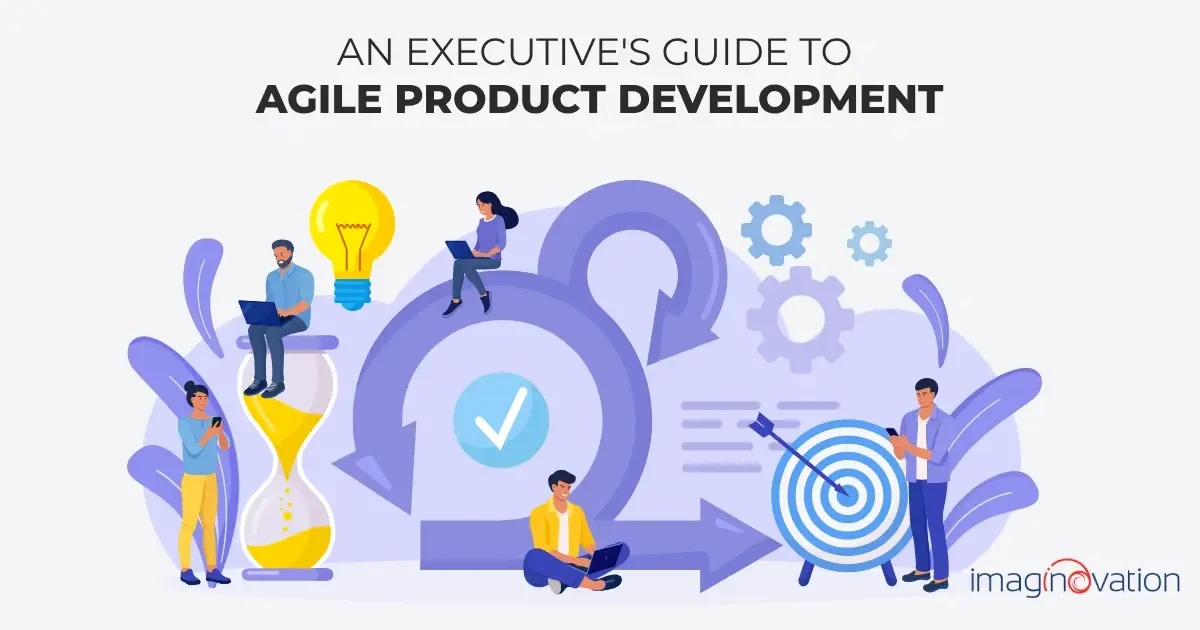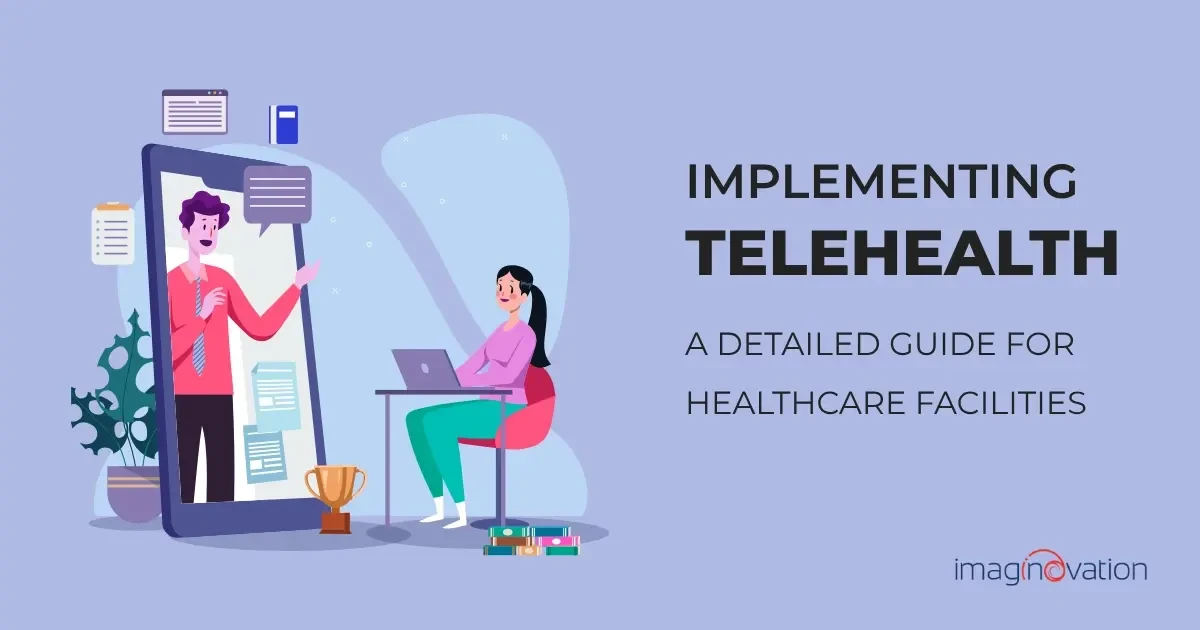Choosing a suitable software development methodology can be challenging.
And why not? After all, software development has always been an expensive process and one that often takes months or years to complete.
Lean is one of the most reliable software development philosophies, which focuses on eliminating waste and optimizing fast product delivery.
The idea behind it is that you stay focused on delivering value as quickly as possible instead of building unnecessary stuff in your product. This way, you will provide more value than what you planned for.
If you’re unsure about how to begin, here’s a step-by-step guide for you.
We’ll give you an overview of lean software development and all the essential Lean principles. We will discuss how this philosophy differs from Agile and explain Lean roles and responsibilities.
Let’s begin!
What is Lean Software Development?
Lean Software Development, or LSD, applies Lean principles to develop software.
Lean principles were first laid out by Toyota, the Japanese automotive manufacturing giant, to optimize development time and resources in their manufacturing process and eliminate waste.
The Lean software development methodology streamlines and optimizes the software developers working on the same principles.
It means that LSD follows an MVP – Minimum Viable Product strategy by which you can speed up the development process and release a bare-minimum version of your product in the market quickly.
The MVP built helps you learn from the user feedback and then carry out further iterations based on that feedback so that all unnecessary pre-planned process stages are eliminated.
What are the Seven Principles of Lean Software Development?
There are seven established principles of lean software development that can help you build software products with efficiency.
Every principle comes with a set of practices and tactics that you can apply right away, to maximize customer value, and avoid any waste in the process.
Let’s delve deeper into these principles.

Image Source
Principle 1: Eliminate Waste
In software development, waste is anything that fails to bring any business value to the customer and improve the quality of your product.
As per the principle of waste elimination, it is essential to identify and systematically remove unnecessary activities from software development. Following software development activities contribute to waste –
- Unnecessary code or functionality: Make sure you prioritize developing only those features that add significant value to the customer. Anything other than that will require time for discussion, development, and testing and will delay your product's TTM (time to market).
- Starting more tasks than can be completed: This adds unneeded complexity to the system, resulting in context-switching, handoffs, and disrupted workflow.
- Delay in the software development process: Delays slow down end-product delivery and feedback loops.
- Unclear and changing requirements: This results in the team’s lack of focus, re-work, frustration, and ultimately quality issues of the product.
- Bureaucracy: While good organization and management are essential, allowing more bureaucracy than is needed delays the entire software development process.
- Poor communication: This includes ineffective communication between the IT team and the stakeholders. It results in unnecessary delays, frustrations, and a drop in focus.
- Partially done work: Incomplete and partially done job neither adds value to the customer nor allows team members to learn from the work.
- Task switching: Jumping software team members from task to task because of poor planning often results in avoidable delays, communication breakdowns, low team morale, and poor work quality.
- Code errors and quality issues: Defects and bugs lead to extra work. They force the programmers to stop what they are currently working on and focus on bug fixing. The result is abandoned work, delayed plans, and poor customer satisfaction.
To identify and remove waste from your software development process, you must avoid making elaborate plans in advance. Instead, you can hold regular meetings after every short iteration.
Your team members can report progress, highlight bottlenecks, and suggest changes to implement during the subsequent iterations. This allows room for constant code improvements.
Principle 2: Build Quality In
While every organization wants to build quality into its product, not everyone can efficiently. Some of our quality-ensuring activities contribute to different kinds of waste through excessive code testing. This is time-consuming and also pushes the development costs much higher.
The 'Building quality in’ principle of lean software development addresses all such issues before they occur. Instead of relying solely on extensive testing later, we start with quality as a critical requirement from the beginning, adding it at every step.
The following tools and techniques are used in lean development to ensure quality all along the process.
- Refactor: Practice it regularly and keep your code clean and structured.
- Pair programming: This is an excellent method that uses the expertise of two developers instead of one. As a result, every task is carried out by two developers so that you can have more effective solutions.
- Test-driven development: you can avoid quality issues by writing your tests before writing the code. Since the developer knows how the code will be tested, they are more likely to write code that fulfills all the scenarios.
- Incremental development and constant feedback: such feedback is precious and ensures good quality.
- Minimize wait states: if you minimize the time between code writing, testing, and bug fixing, you can be sure to lower context switching and knowledge gaps from the development cycle.
- Automate testing: This involves automating every process that’s tedious, manual, and prone to human errors.
Principle 3: Create Knowledge

This is another lean principle that seems simple but requires discipline to implement. Here, you can create knowledge through learning.
Your team must document and retain their valuable learning according to this principle. This is done by applying a combination of the following tools:
- Code reviews
- Pair programming
- Documentation
- Thoroughly commented code
- Knowledge sharing sessions
- Training
- Methods such asset-based design for managing requirements
Principle 4: Defer Commitment
This lean principle is all about responsible decision-making. However, it doesn't give the team the liberty to be flaky and irresponsible in their work commitments.
Instead, it promotes the opposite. Using this principle, teams are encouraged to decide responsibly by keeping options open, continuously gathering necessary information, and avoiding making any commitment without essential data.
What it means is:
- No excessively detailed plan in advance.
- No commitment to ideas without a thorough understanding of the business requirements.
- Consistent collection and analysis of essential information regarding significant decisions.
Principle 5: Deliver Fast
Often it is believed that meticulous and long-term planning is key to business success. But unfortunately, this also means that only when every aspect of your strategy is worked out thoroughly and agreed upon, and strict development milestones are established can you enter the software market.
While this sounds great in theory, it often leads to problems in practice. With this approach, engineers spend a lot of time building complex, monolithic systems with unnecessary features and a backlog of unfixed bugs.
In addition, it restrains them from adapting their product to the ever-changing market scenario and client requirements.
That’s why lean engineers build an MVP (minimum viable product) with essential functionality and launch the MVP product to the market as quickly as possible. User feedback helps the engineers learn and make amendments accordingly.
This works well to incrementally enhance a code based on the customers' feedback and ditch everything else that is of no value.
Principle 6: Respect for People

Lean aims at empowering team members instead of controlling them.
This principle goes beyond establishing basic human courtesy; it generates trust within projects.
How?
Engineers are granted the freedom to make decisions based on their knowledge and judgment. Provided, of course, they’re experienced enough to do so.
Such an approach highly contributes to a quick application of alterations needed in the software, and it also keeps your developers motivated.
Treating your developers as competent, motivated professionals rather than robots writing code is the key here.
Principle 7: Optimize the Whole
It means we need to focus on improving the entire process of delivering software and not just the development phase.
Suboptimization is a big issue in software development. There are two vicious cycles into which Lean development teams tend to fall because of suboptimization.
The first is releasing poorly coded products just for the sake of speed. When we pressure our developers to deliver at all costs, they release code that may or may not address quality standards.
This can increase the complexity of the code, resulting in more bugs. This means more work for the developers and more pressure on them to deliver quickly… so the cycle continues non-stop.
The second issue comes with testing. When testers are overloaded, it creates long delays between developers writing code and testing, and giving feedback. This means that developers continue writing code that can be defective, resulting in many bugs and requiring more testing.
Optimizing the whole principle encourages Lean teams to remove such issues by operating to understand capacity and impact better.
Lean vs. Agile: Key differences
Lean and Agile are popular software development methodologies. While both methods promote productivity and fast delivery, we highly recommend that you understand the dissimilarities in their guaranteed correct application.
Let’s take a look.
| |
Lean |
Agile |
| Foundation |
It began its journey in the manufacturing sector, and then other sectors followed. |
It was born in the software development sector, and then other sectors followed. |
| Core Philosophy |
This methodology focuses on waste elimination and a minimalistic approach towards software development. |
Collaboration is core to the Agile methodology. |
| Principles |
There are seven principles of Lean software development. 1. Eliminate waste 2. Build quality In 3. Create knowledge 4. Defer commitment 5. Deliver quickly 6. Respect people 7. Optimize the whole |
There are 12 principles of Agile software development. 1. The highest priority is customer satisfaction 2. Welcome changing requirements 3. Frequent delivery of software 4. Business people and developers cooperating daily 5. Build projects around motivated individuals 6. A face-to-face conversation is best 7. Working software is the primary measure of progress 8. Sustainable development pace 9. Continuous attention to technical excellence and good design 10. Simplicity 11. Self-organizing teams 12. Regular reflection & adaptation |
| Other Differences |
1. Lean is all about stable workflow. 2. Lean gives more importance to the process of software development. 3. Lean can be applied to cut costs. 4. Lean follows a systematic approach to building products by eliminating anything unnecessary. |
1. Agile is more adaptive toward changes. 2. Agile gives the working product more value than the process. 3. Agile cannot be used to cut costs. 4. Agile gets into product building through consistent responses and feedback. |
CTO's Guide to Lean Roles and Responsibilities
If you’re planning to use the lean approach for software development in your company, remember that your primary focus should be to streamline the software development process and remove all activities that do not bring value.
And this can only happen when you have a lean-thinking team with you.
What constitutes such a team? What are their roles and responsibilities?
Lean works well with both small and big teams. Team size hardly matters, but the primary lean roles you need to have are:
1. Lean Master
Lean Master is an experienced professional who has worked with clients in the same environment. Because of that, he will be more aware of the project and the product.
Moreover, they have an in-depth knowledge of lean concepts/methods and know-how to apply them to reduce waste and improve efficiency.
Lean Masters supports the client by-
- Establishing the goals and purpose of every team.
- Selecting and allocating people (resources) with the relevant skills.
- Mentoring and training people in Lean thinking.
- Managing a master plan and changes.
- Encouraging the team to make intelligent decisions.
- Their knowledge of Lean tools and techniques.
2. Lean Project Leaders

The lean project Leader works as the core communication channel between Lean Master and the team. They also work as a motivator.
Key responsibilities of a lean project leader include-
- Leading lean projects and teams.
- Removing barriers in the project and reporting progress.
- Offering clear communication and organizing project activities.
- Contributing to team improvement.
3. Lean Team Members
Lean teams are designed around individual processes. The poor team members are experts in their work. They include developers and testers with relevant skills. The team members are great at designing and implementing a solution.
Develop Powerful Custom Software with Imaginovation
If you want to build unique software keeping in mind the waste elimination strategy by Lean, contact us at Imaginovation.
We will help you design a customized solution that caters to your business needs.
Imaginovation is an award-winning web and mobile app development company with vast experience crafting remarkable digital success stories for diverse companies.
Let's talk.




